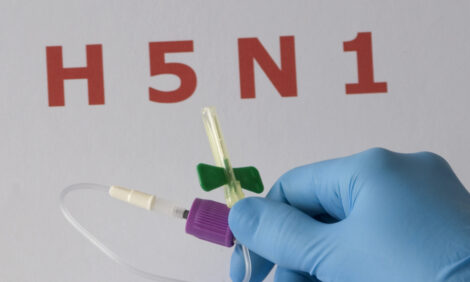



Survival of Salmonella in Liquid Egg Products
US - Increasing atmospheric carbon dioxide to enhance egg quality did not promote the growth of Salmonella Enteritidis in eggs, report J.B. Gurtler (USDA Wyndmoor) and D.E. Conner (Auburn University) in a paper published in the current issue of Foodborne Pathogens and Disease .Cryogenic cooling of shell eggs with carbon dioxide is known to improve egg content quality through rapid cooling as well as by increasing internal carbon dioxide levels, according to researchers, Gurtler and Conner.
They undertook a study to determine the effects of variations in atmospheric carbon dioxide concentrations (aerobically stored, flushed with carbon dioxide and sealed, or bubbled with carbon dioxide) on the survival and growth of Salmonella Enteritidis in liquid egg products including whole egg, albumen, yolk, and albumen plus one per cent yolk.
Egg products were inoculated with a three-strain composite of Salmonella Enteritidis at approximately four log colony-forming units (CFU) per mL and stored at 7 and 10°C for 8 or 4 days, respectively, or at approximately two log CFU/mL and stored at 23 and 37°C for 48 or 24 hours, respectively.
Salmonella populations differed based on variations in liquid egg composition (p<0.05). Manipulating the atmospheric concentrations of carbon dioxide in which liquid egg products were stored did not significantly inhibit the growth of Salmonella Enteritidis (p>0.05) in yolk-containing egg products or affect the inhibitory activity of albumen-containing products.
Populations of Salmonella were static at 7°C over the entire storage period and significant growth occurred in whole egg and yolk stored at 10°C.
Populations in egg stored at 23 and 37°C were greater in yolk than in whole egg, although whole egg had populations greater than in albumen or albumen plus one per cent yolk (p<0.05).
Results of this investigation suggest that increasing atmospheric carbon dioxide to enhance egg quality should not promote the growth of Salmonella Enteritidis in eggs.
Reference
Gurtler J.B and D.E. Conner. 2009. Survival and growth of Salmonella enteritidis in liquid egg products varying by temperature, product composition, and carbon dioxide concentration. Foodborne Pathogens and Disease, 6(5): 561-567. doi:10.1089/fpd.2008.0202.









